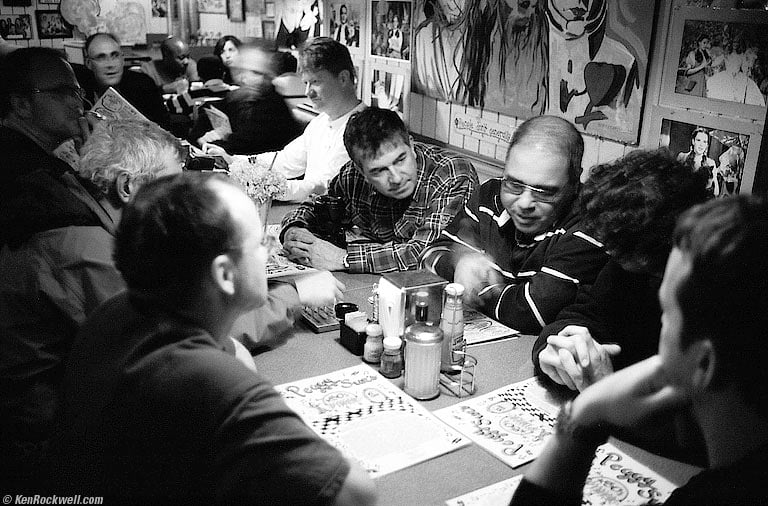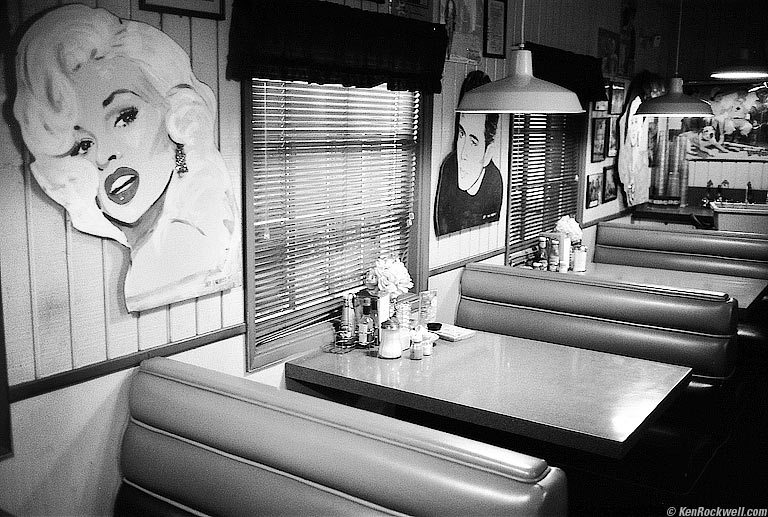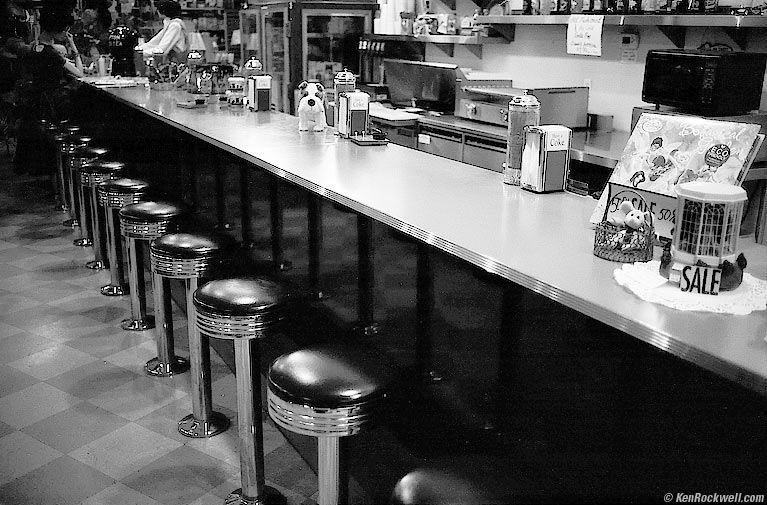Home Donate New Search Gallery How-To Books Links Workshops About Contact
ROUTE 66
13 FEBRUARY 2010, SATURDAY
(this page best viewed on Mac with Futura font activated)
12 13 14 15 16 17 February 2010 contact sheet tech data
An intrepid few of us arose before dawn to scope out sunrise in the fields.
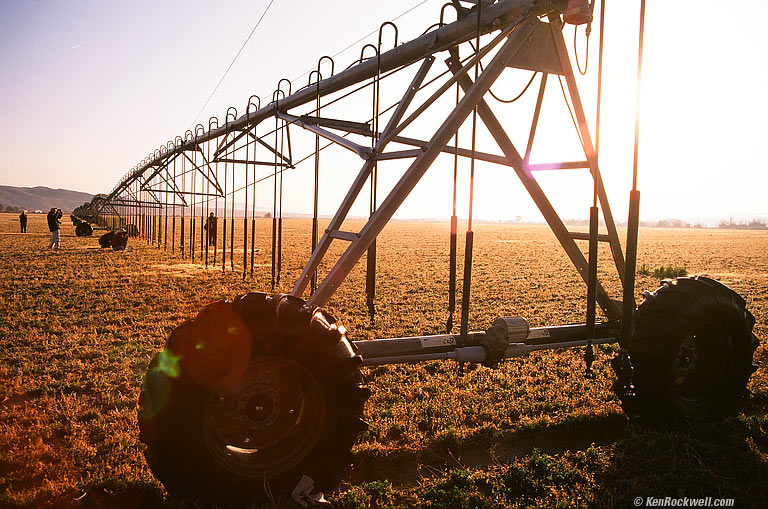
IRRIGATION SYSTEM, BARSTOW. (Velvia 50, 67mm Tiffen 812 filter, 1980s Tamron 28-200mm f/3.5-5.6, 1980s Minolta MAXXUM 7000, NCPS scan.)
José was kind enough to bring his MAXXUM 7000 for me to try, and Steve just happened to have an 812 filter with him, so I was set. The MAXXUM 7000 is the world's first autofocus SLR, which is one heck of a lot of technology to hold in your hand. Not only does the MAXXUM 7000 set both aperture and shutter speed all by itself according to a pre-programmed on-board computer, the MAXXUM is even more incredible: you press a button, and it focuses all by itself! Wow!
We headed back to Barstow, had breakfast with the slackers, and then headed out east along Route 66. First stop: Dagget.
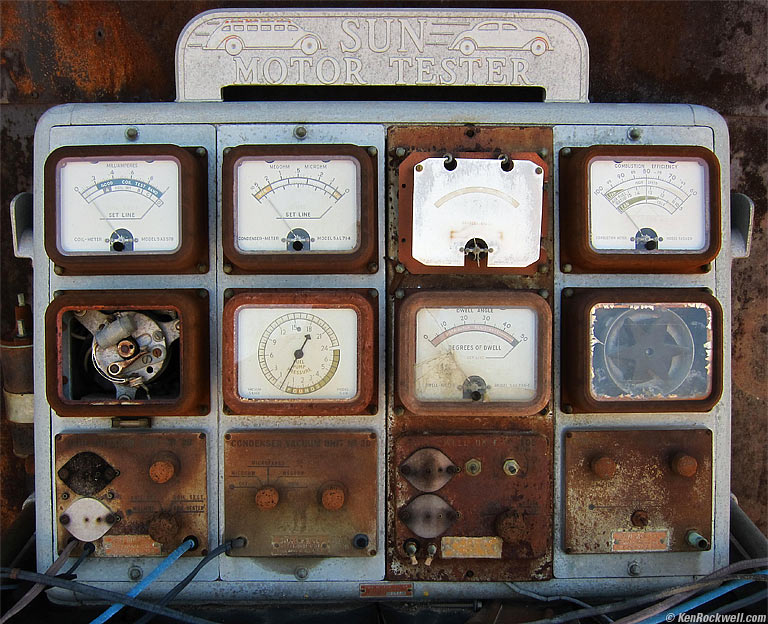
SUN MOTOR TESTER, DAGGET. (Canon S90)
Next stop: Newberry Springs.
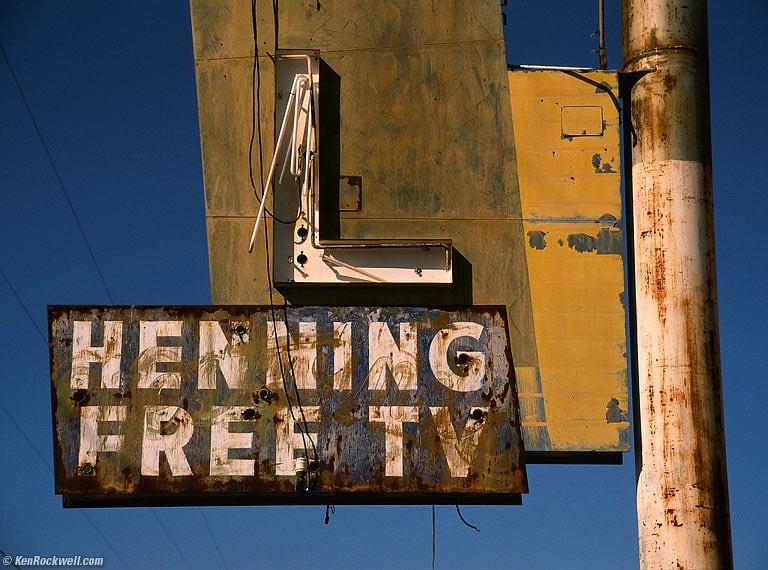
MOTEL, NEWBERRY SPRINGS. (Velvia 50, 67mm Tiffen 812 filter, 1980s Tamron 28-200mm f/3.5-5.6, 1980s Minolta MAXXUM 7000, NCPS scan.)
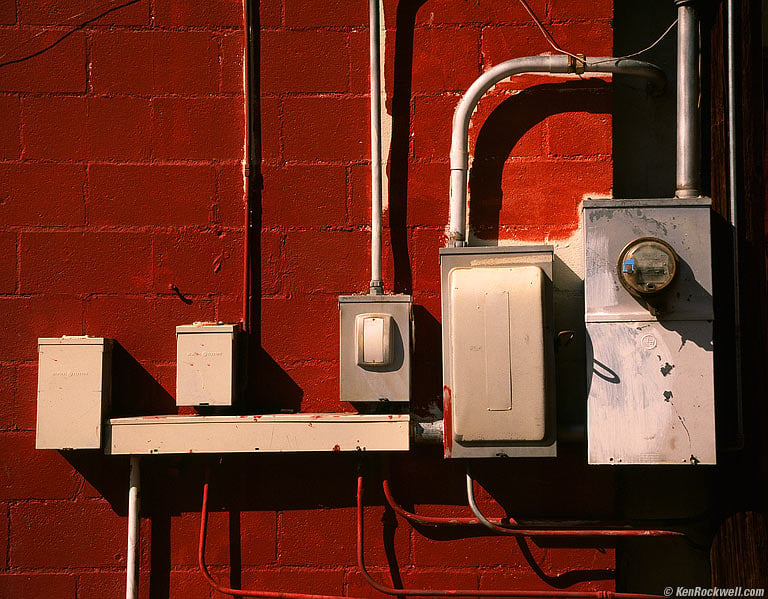
RED WALL, NEWBERRY SPRINGS. (Velvia 50, 67mm Tiffen 812 filter, 1980s Tamron 28-200mm f/3.5-5.6, 1980s Minolta MAXXUM 7000, NCPS scan.)
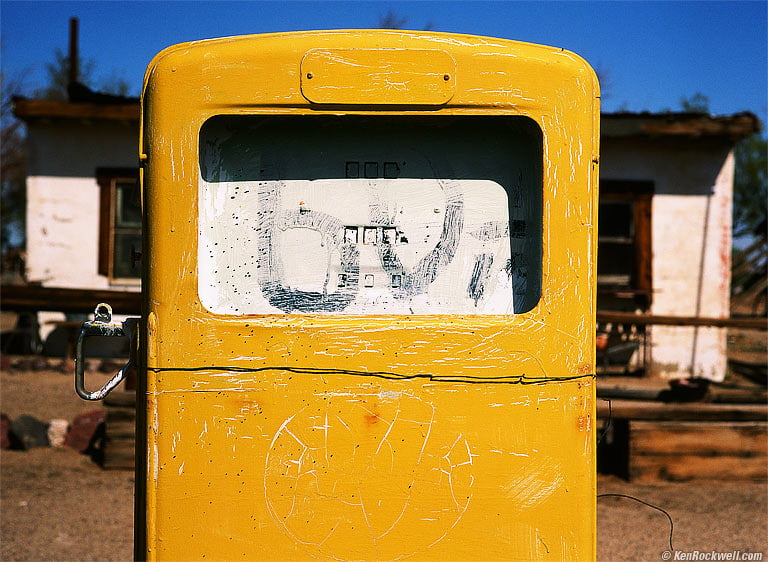
PUMP, MARY'S PLACE, NEWBERRY SPRINGS. (Velvia 50, B+W MRC 39mm 81A filter, 1957 50mm f/2 LEICA SUMMICRON mit near-focusing range, 1963 LEICA M3, 1980 LEICAMETER MR-4 CdS light meter, NCPS scan.)
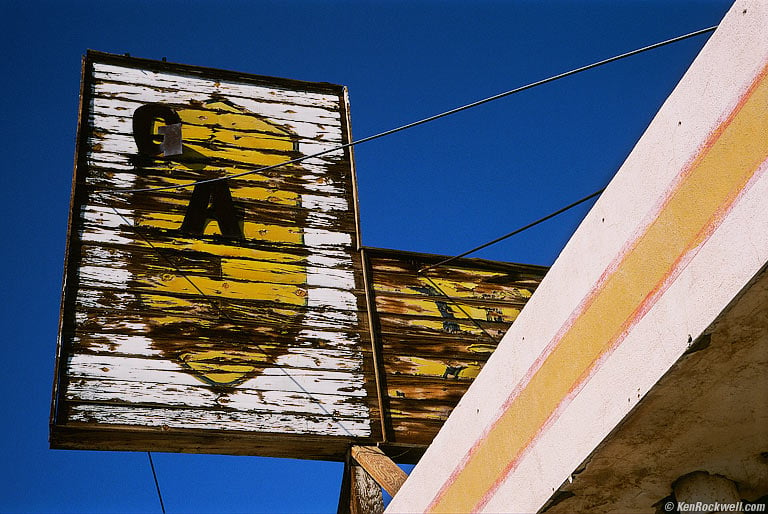
WHITING BROTHERS SIGN, MARY'S PLACE, NEWBERRY SPRINGS. (Velvia 50, B+W MRC 39mm 81A filter, 1957 50mm f/2 LEICA SUMMICRON with near-focusing range, 1963 LEICA M3 1980 LEICAMETER MR-4 CdS light meter, NCPS scan.)
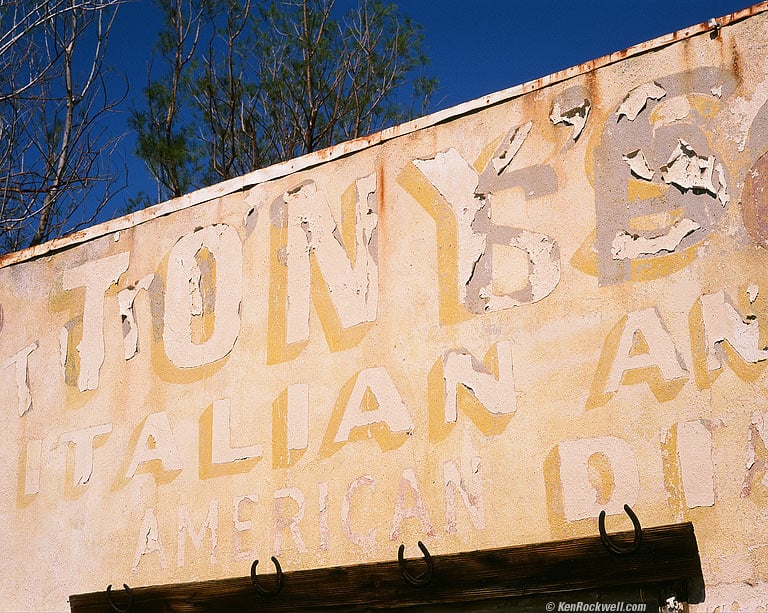
TONY'S ITALIAN, NEWBERRY SPRINGS. (Velvia 50, B+W MRC 39mm 81A filter, 1957 50mm f/2 LEICA SUMMICRON with near-focusing range, 1963 LEICA M3, 1980 LEICAMETER MR-4 CdS light meter, NCPS scan.)
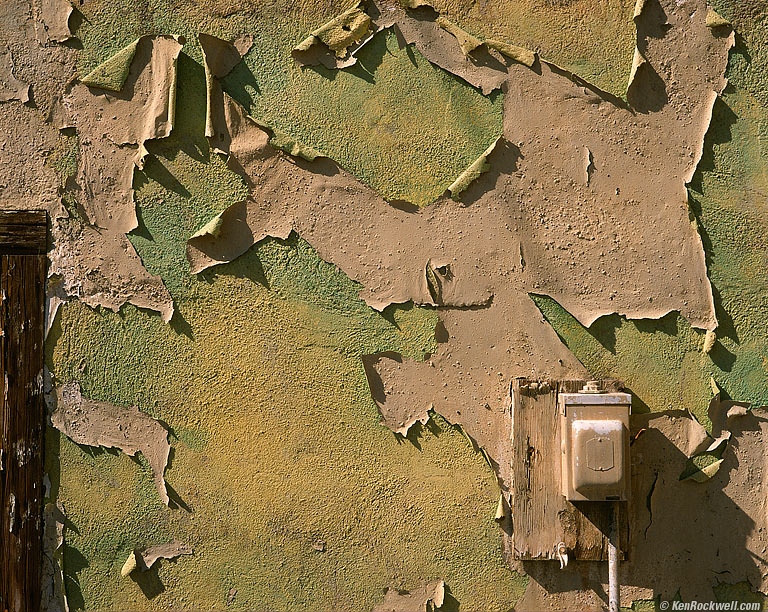
NEWBERRY SPRINGS. (Velvia 50, B+W MRC 39mm 81A filter, 1957 50mm f/2 LEICA SUMMICRON with near-focusing range, 1963 LEICA M3, 1980 LEICAMETER MR-4 CdS light meter, NCPS scan.)
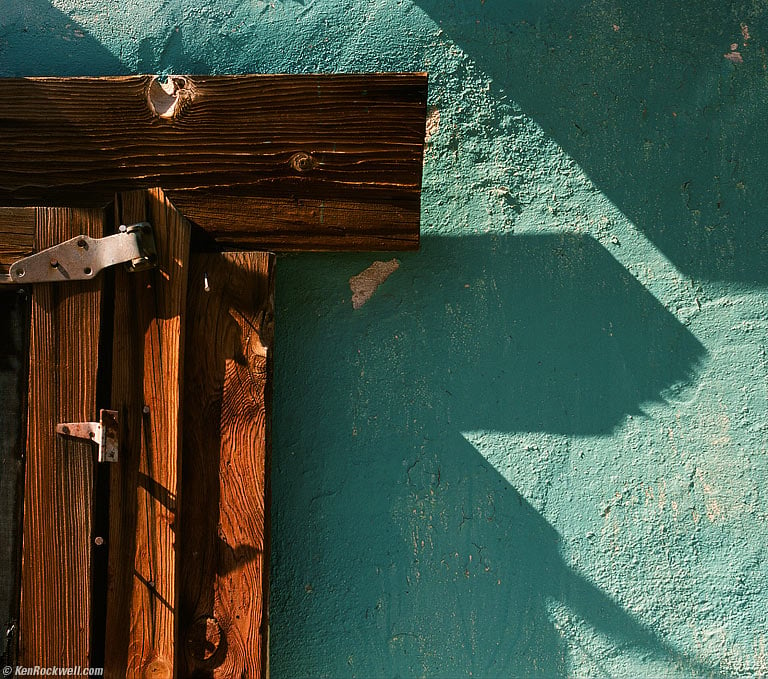
MARY'S PLACE, NEWBERRY SPRINGS. (Velvia 50, B+W MRC 39mm 81A filter, 1964 90mm f/2.8 LEICA ELMARIT, 1963 LEICA M3, 1980 LEICAMETER MR-4 CdS light meter, NCPS scan.)
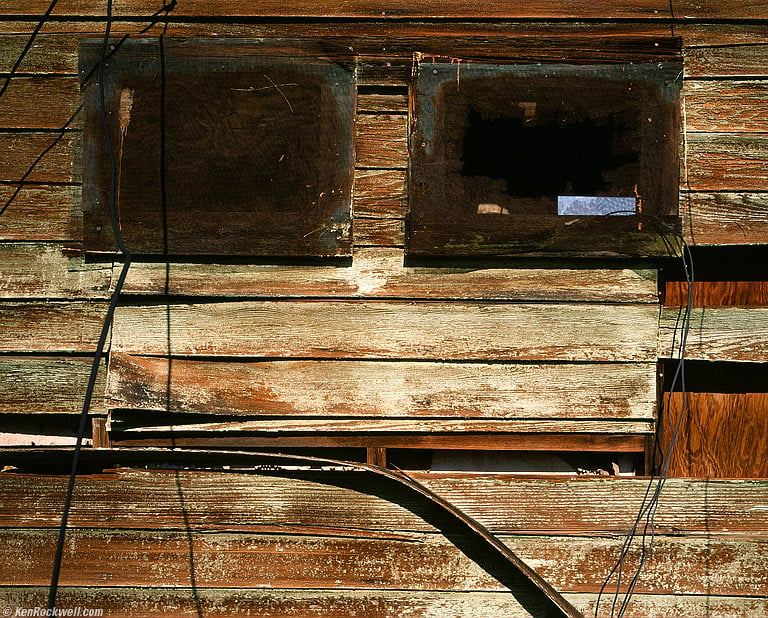
GRUMPY FACE, NEWBERRY SPRINGS. (Velvia 50, B+W MRC 39mm 81A filter, 1965 35mm f/2 LEICA SUMMICRON, 1963 LEICA M3, 1980 LEICAMETER MR-4 CdS light meter, NCPS scan.)
Next Stop: Pisgah Crater.
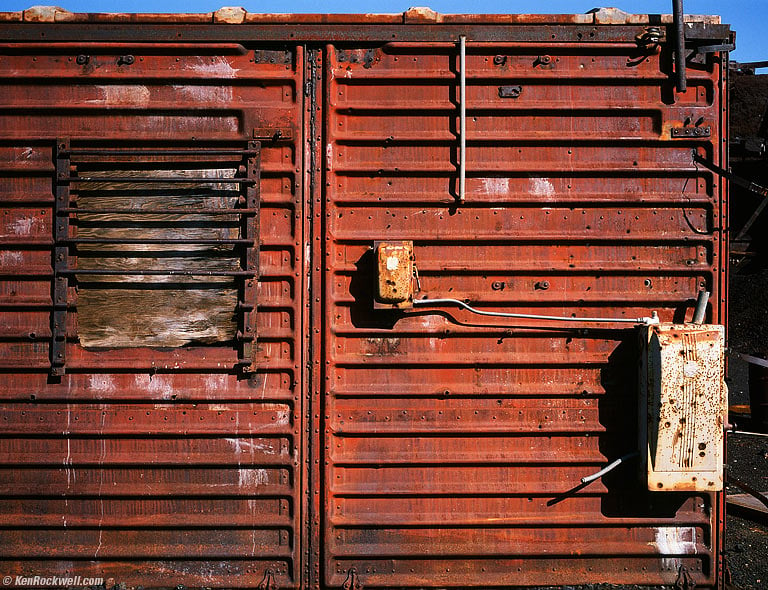
PISGAH MINERS' PRISON. (Velvia 50, B+W MRC 39mm 81A filter, 1957 50mm f/2 LEICA SUMMICRON with near-focusing range, 1963 LEICA M3, 1980 LEICAMETER MR-4 CdS light meter, NCPS scan.)
This was shot on frame 38 of a 36-exposure roll. This is nothing special on film, but when was the last time you got 4.2GB onto a 4GB card? With digital, you're lucky to fit 3.8GB on a 4GB card, and the amazing thing is that no one has any class-action lawsuits against the card makers for never delivering the advertised capacity for which you pay.
OK, enough of this happy crap with the color film. Some people have to work for a living, so it's back to black-and-white film. Also let's chuck out the battery powered meters and shoot like a man with a selenium-cell (self-powered) meter. With ASA 50 film, you must set the meter two stops slower, or ASA 12, with an orange filter. Thus I was shooting at about f/5.6 at 1/30 for these shots below in broad daylight. Now I know why fast lenses were always so critical.
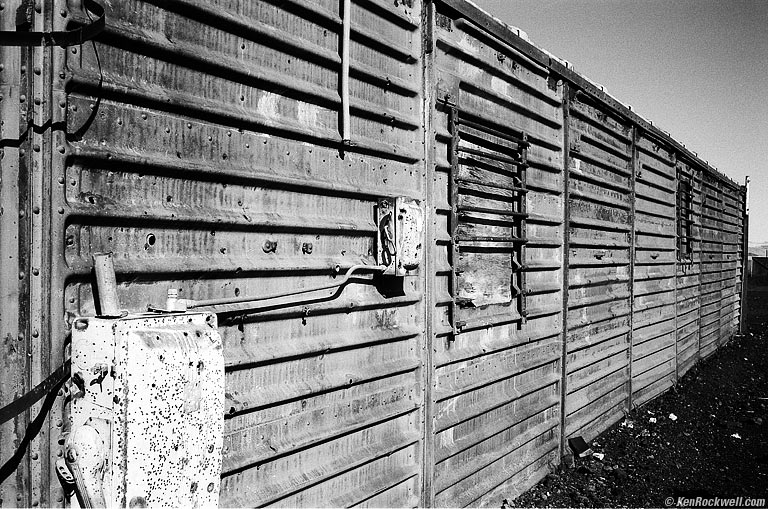
PISGAH MINERS' PRISON. (ILFORD PAN-F 50, 39mm LEITZ Or orange filter, 1965 35mm f/2 LEICA SUMMICRON, 1963 LEICA M3, 1950s LEICAMETER MC LEICAMETER MR-4 selenium-cell meter set to ASA 12, NCPS scan.)
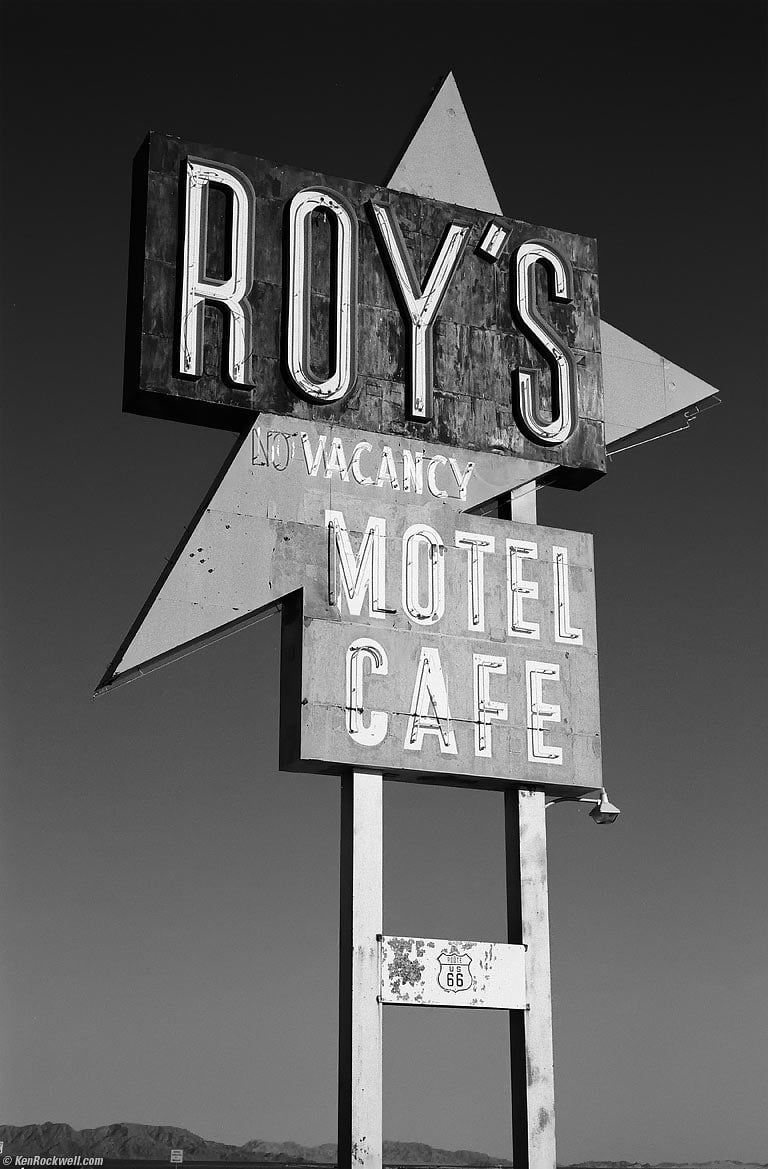
ROY'S. (ILFORD PAN-F 50, 39mm LEITZ Or Orange filter, 1957 50mm f/2 LEICA SUMMICRON with near-focusing range, 1963 LEICA M3, 1950s LEICAMETER MC selenium-cell meter set to ASA 12 to include filter factor, NCPS scan.)
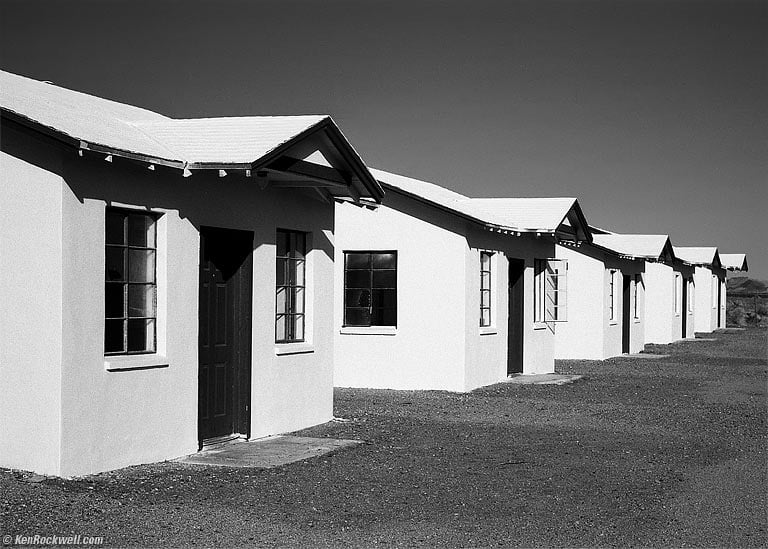
ROY'S MOTEL. (ILFORD PAN-F 50, 39mm LEITZ Or orange filter, 1965 35mm f/2 LEICA SUMMICRON, 1963 LEICA M3, 1950s LEICAMETER MC selenium-cell meter set to ASA 12, NCPS scan.)
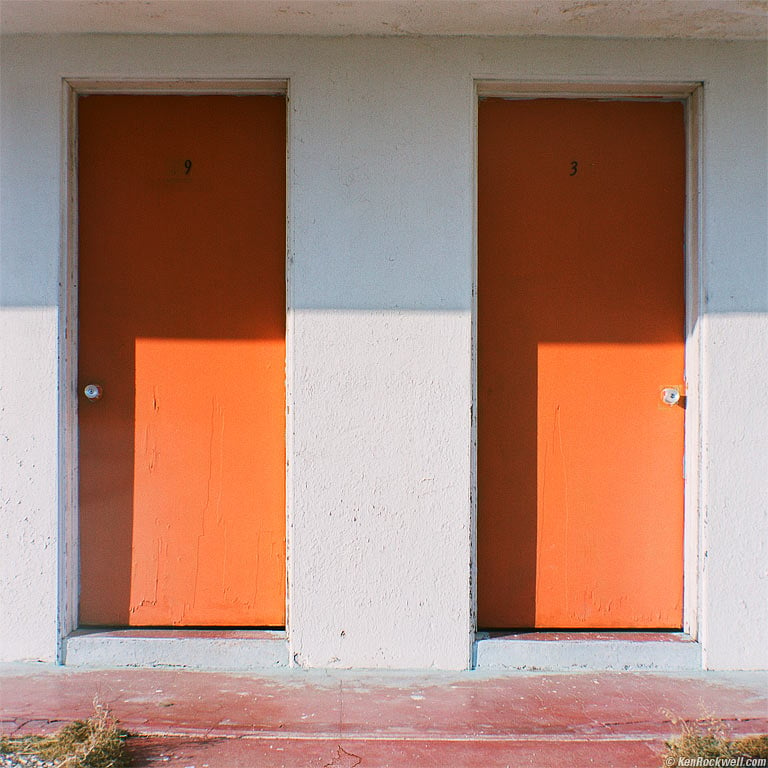
ROY'S MOTEL. (Fuji NPS ISO160 (expired in 1997), Kodak Brownie Hawkeye, NCPS scan.)
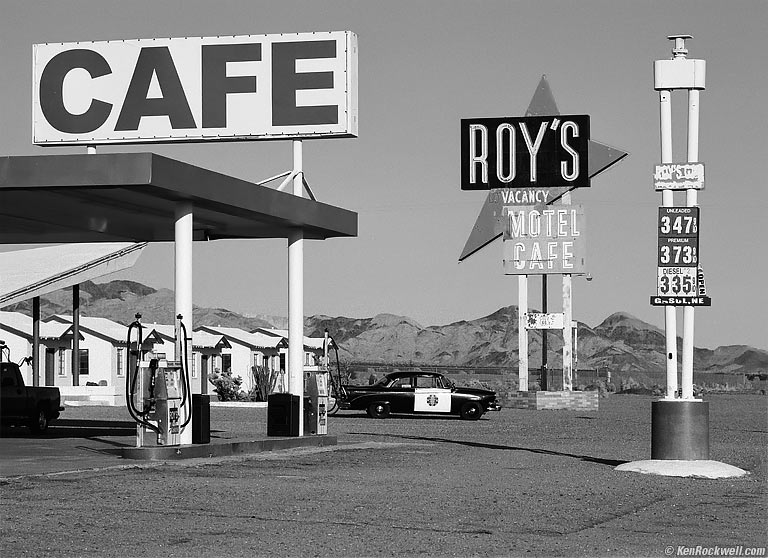
ROY'S. (ILFORD PAN-F 50, 39mm LEITZ 1 yellow filter, 1957 50mm f/2 LEICA SUMMICRON with near-focusing range, 1963 LEICA M3, 1950s LEICAMETER MC selenium-cell meter set to ASA 25, NCPS scan.)
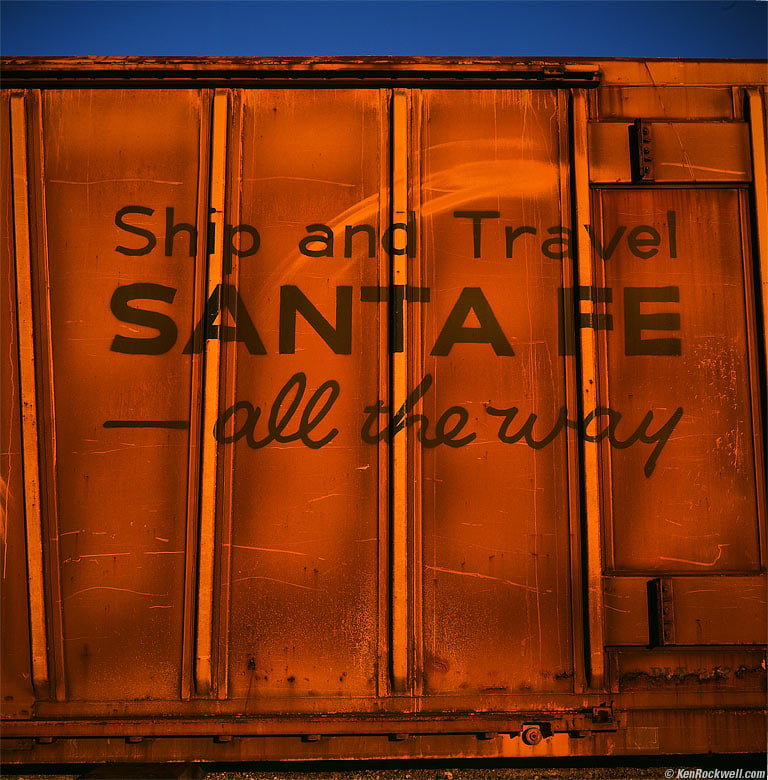
SANTA FE, AMBOY. (Velvia, 81A filter, 75mm lens, New Mamiya 6, NCPS scan.)
OUR GROUP AT PEGGY SUE'S DINER, YERMO. (ILFORD PAN-F 50, no filter, 1965 35mm f/2 LEICA SUMMICRON, 1963 LEICA M3, 1980 LEICAMETER MR-4 CdS light meter at ASA 50, about 1/2 second at f/2, no stinking tripod, NCPS scan.)
While I thought it was weird shooting at 1/30 in broad daylight with filters (ASA 50 film becomes ASA 25 or ASA 12 with yellow or orange filters), oddly, since I shoot so much ASA 50 Velvia, it was nothing out of the ordinary pulling the filter and shooting at 1/2 of a second at ASA 50 in the dark. High-speed ASA 100 film (ISO 100) is for whimps, and remember, TRI-X was only rated at ASA 200 at its introduction in 1958.
The LEICA M3 is so smooth when it fires, compared to the flipping mirrors of SLRs, that 1/2 second exposures are easy. Screw VR, IS and tripods.
So if I had no problem shooting hand-held with ASA 50 fim, why would I need ASA (ISO) 100 film? Just to get more grain?
I certainly didn't need ISO 500. I have no idea in creation why anyone would need ISO 5,000.
So why would anyone think they need ISO 50,000 or more on something ridiculous like the Nikon D3S? Clearly, those people aren't photographers, or maybe they shoot crummy lenses. With the Nikon 24mm f/1.4, 50mm f/1.4 or 85mm f/1.4, you have enough light to shoot any ISO in any light. (Canon made a 24mm f/1.4, 50mm f/1.2 and 85mm f/1.2 as far back as the 1970s.) If you're silly enough to cheap-out on lenses and have only a slow (f/2.8 or slower) zoom, then you'll have problems, even with high ISOs, and thus NIkon can sell you more cameras.
PEGGY SUE'S DINER, YERMO. (ILFORD PAN-F 50, no filter, 1965 35mm f/2 LEICA SUMMICRON, 1963 LEICA M3, 1980 LEICAMETER MR-4 CdS light meter at ASA 50, about 1/2 second at f/2, no stinking tripod, NCPS scan.)
PEGGY SUE'S FOUNTAIN, YERMO. (ILFORD PAN-F 50, no filter, 1965 35mm f/2 LEICA SUMMICRON, 1963 LEICA M3, 1980 LEICAMETER MR-4 CdS light meter at ASA 50, about 1/15 second at f/2.8, no stinking tripod, NCPS scan.) I goofed and under exposed a couple of stops, but no big deal: it's trivial to move levels around with scanned film.)
12 13 14 15 16 17 February 2010 contact sheet tech data
Home Donate New Search Gallery How-To Books Links Workshops About Contact
